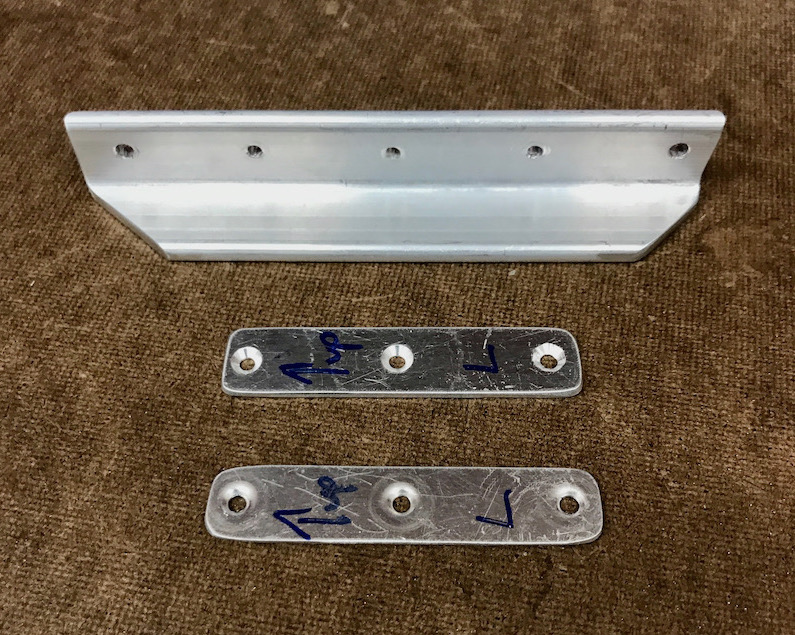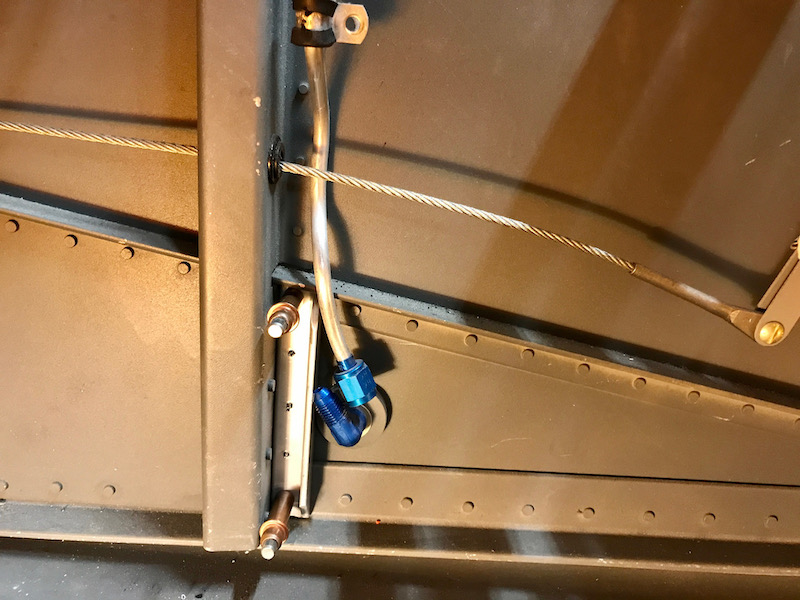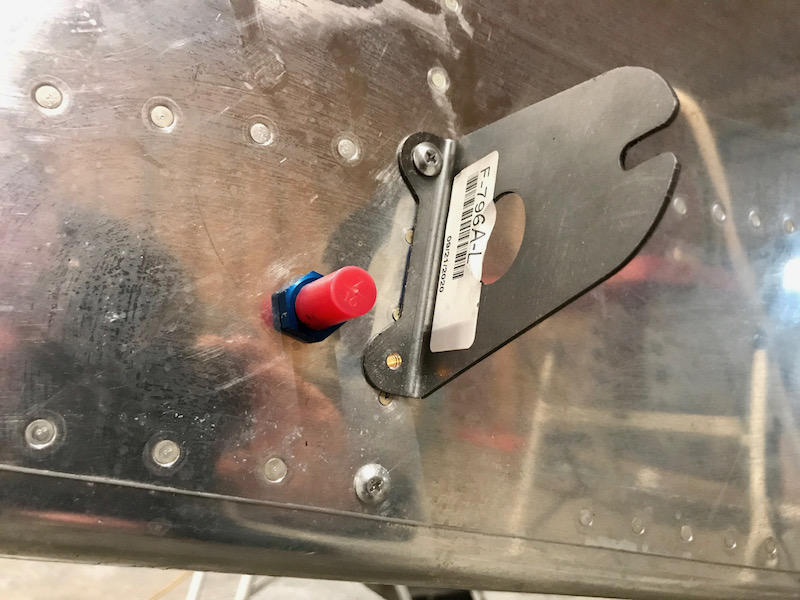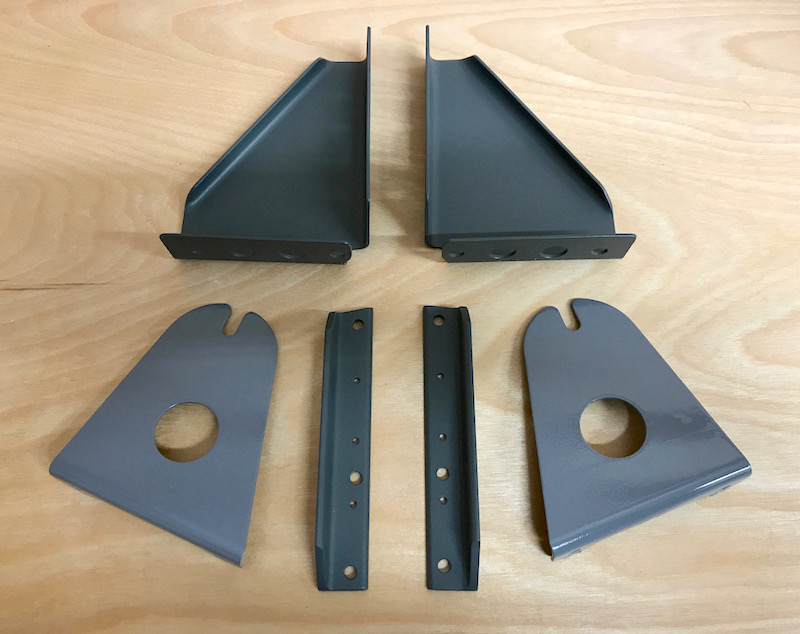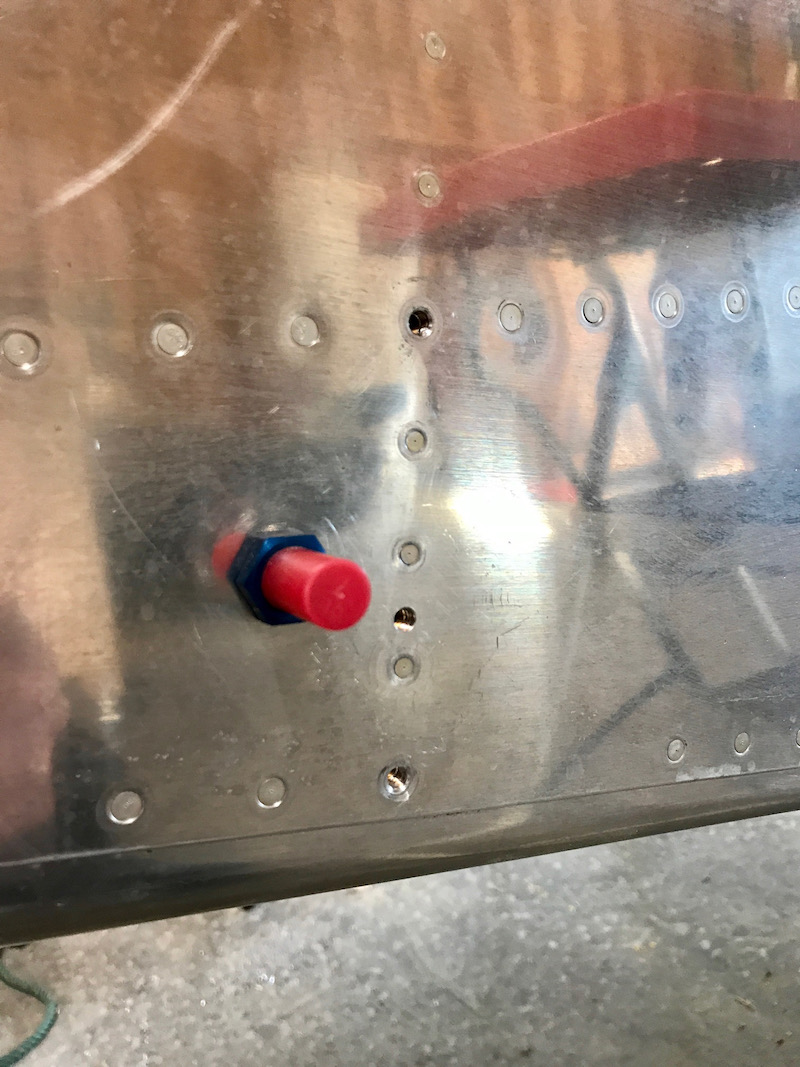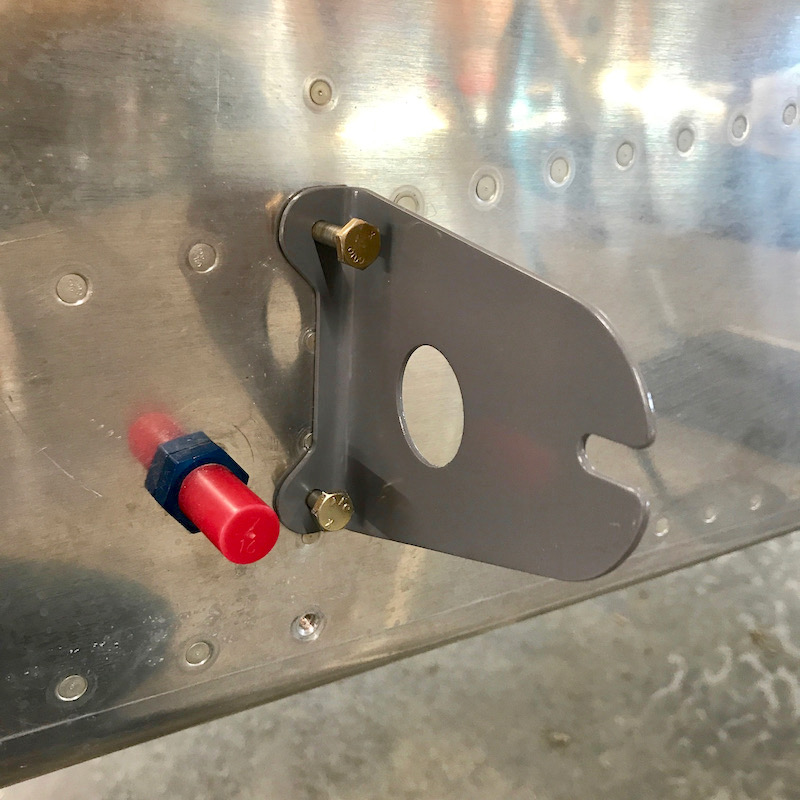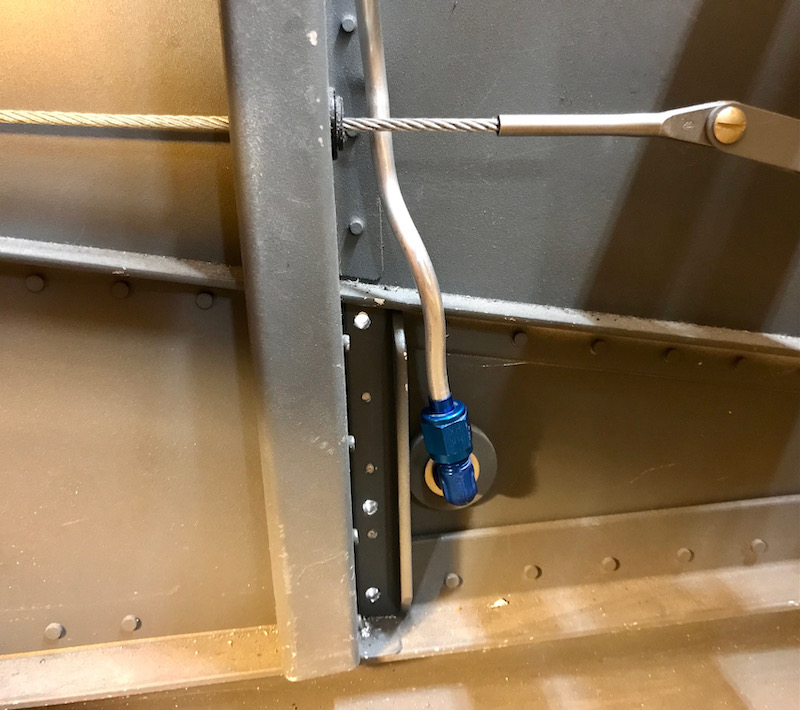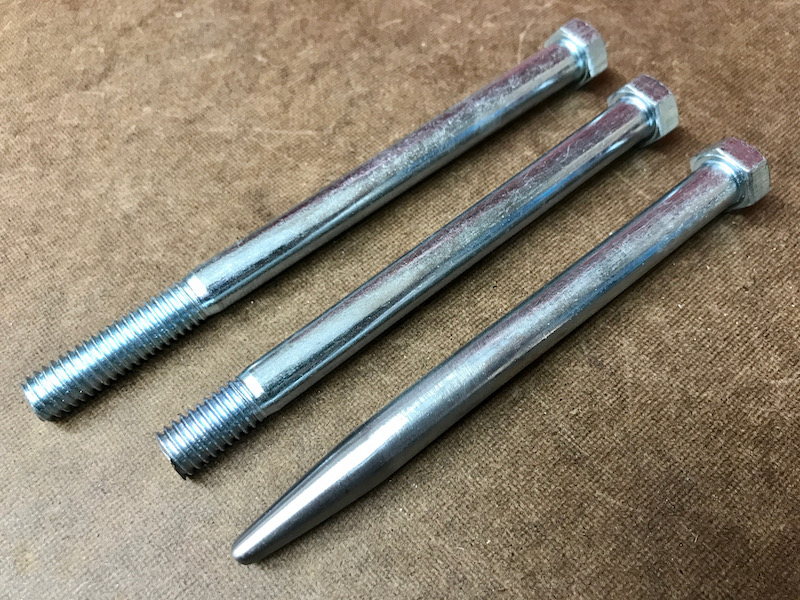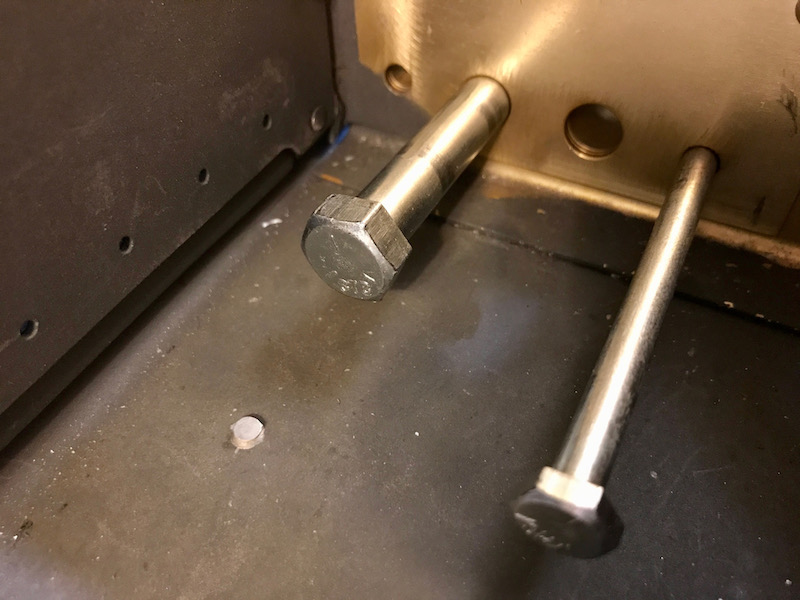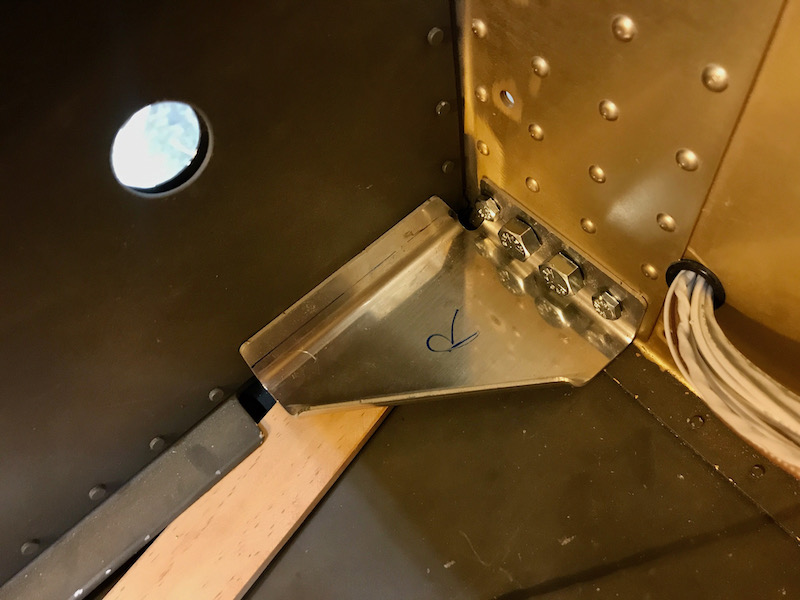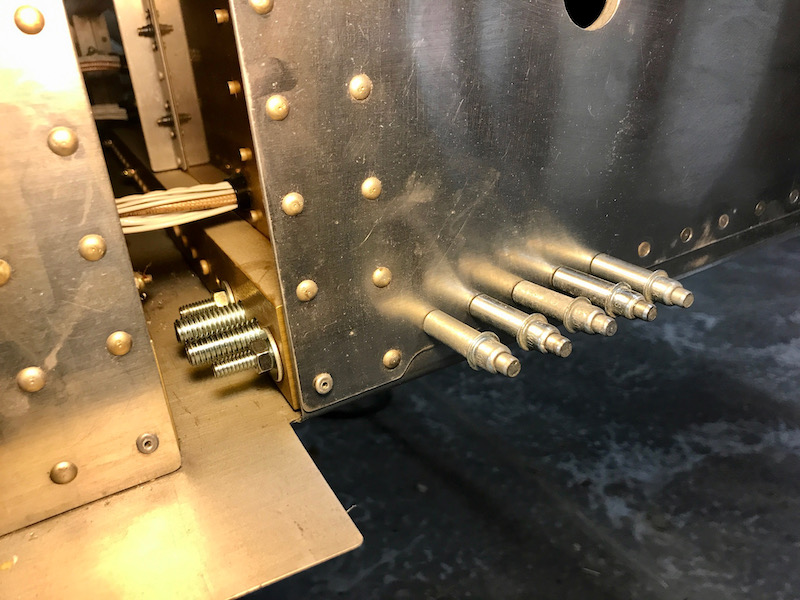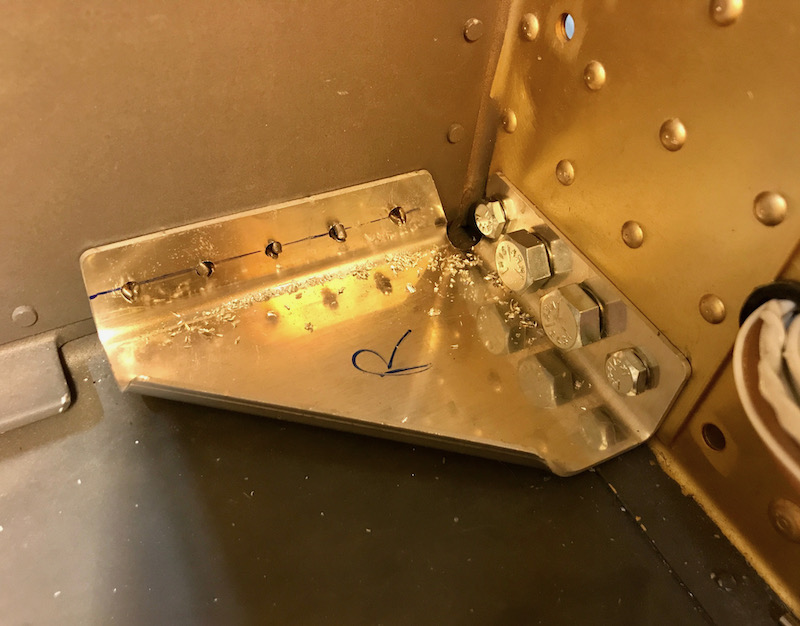To complete the plumbing of the brake system I bought a set of teflon-lined, steel-braided brake hoses from TS Flightlines. Tom was great to work with, and I'd recommend his services to anyone in need of aircraft plumbing.
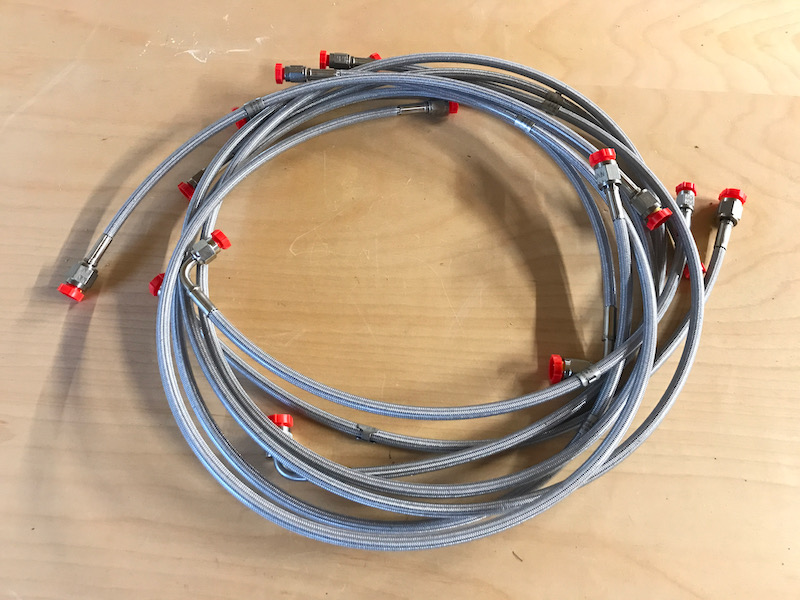
I really only needed the two hoses that go between the firewall and the brake calipers, but I decided to go ahead and replace all the interior hoses with this new non-life-limited teflon stuff too. As a bonus, the new hoses are thinner and lighter than the old ones they're replacing.
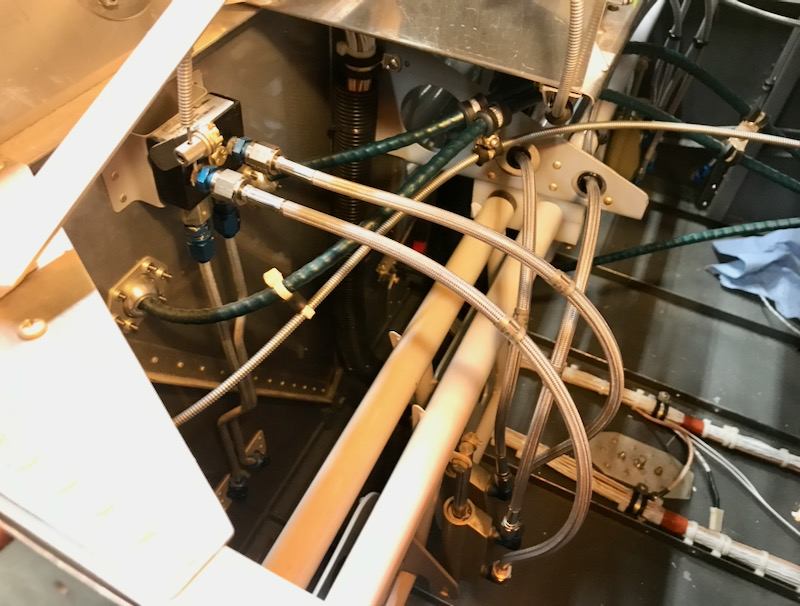
A few strategic tie wraps keep the hoses from binding on each other:
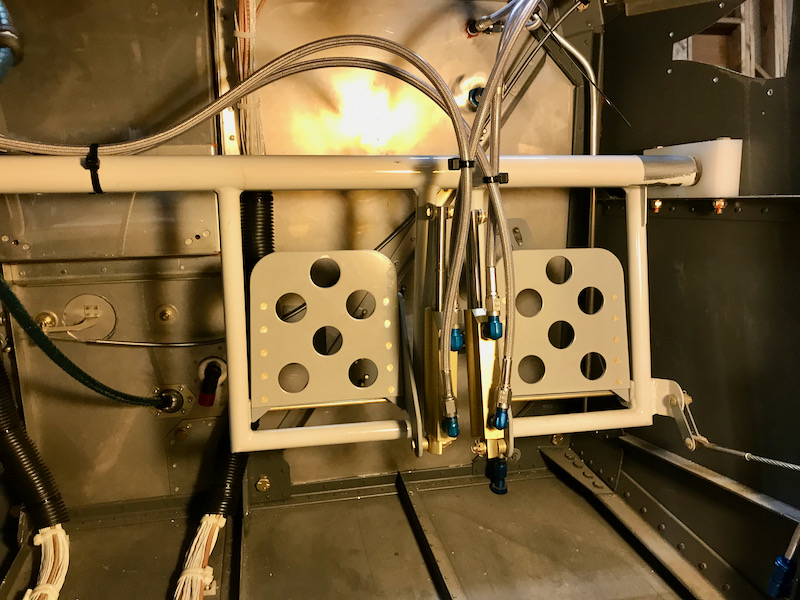
I also replaced the plastic "ice maker" tubing from the brake reservoir to the passenger pedals. I had to experiment with hose routing and fitting angles to make sure these hoses remain well clear of the avionics and wiring mounted above.
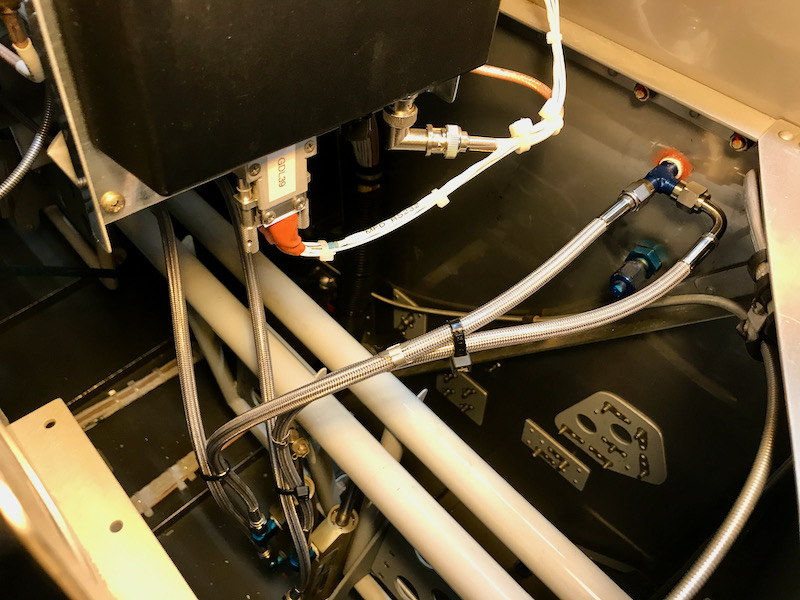
Forward of the firewall, one hose splits off towards each brake caliper:
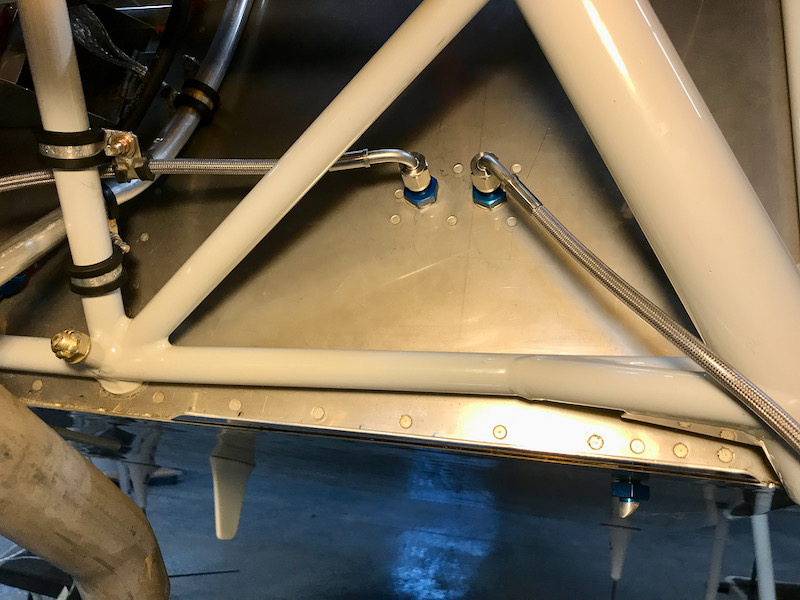
In this overview shot you can see that the left side brake hose has a straight shot down the gear leg to the left brake caliper. The right side brake hose, on the other hand, takes a circuitous route across the engine compartment to reach the right gear leg:
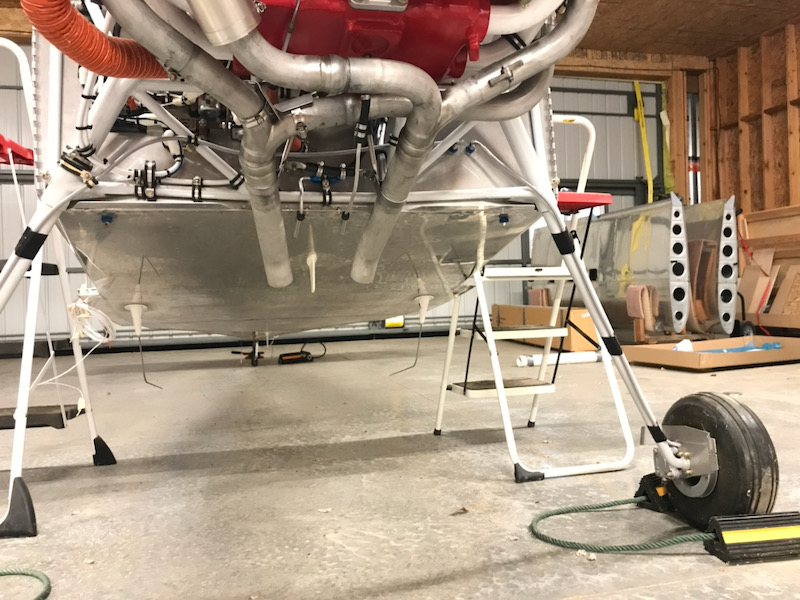
The hoses are affixed with small lengths of split plastic tubing that are stuck to the gear leg with plain old black electrical tape. This seems a little cheesy until you realize that an adel clamp would be heavier, bulkier, and wouldn't properly clamp onto the tapered gear leg anyway.
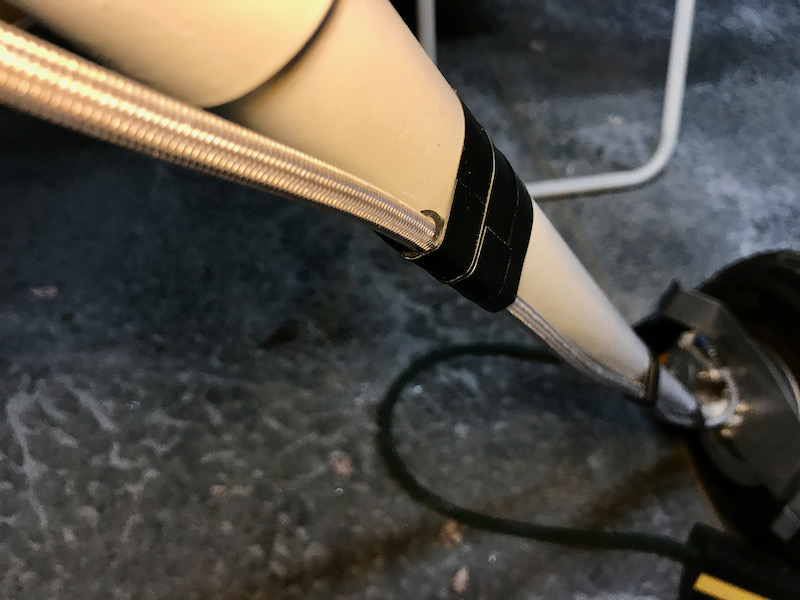
Down at the caliper there's plenty of slack to allow the brakes to work. The use of flexible hoses instead of rigid aluminum tubing along the gear legs is more expensive but almost trivially simple compared to the plans method.
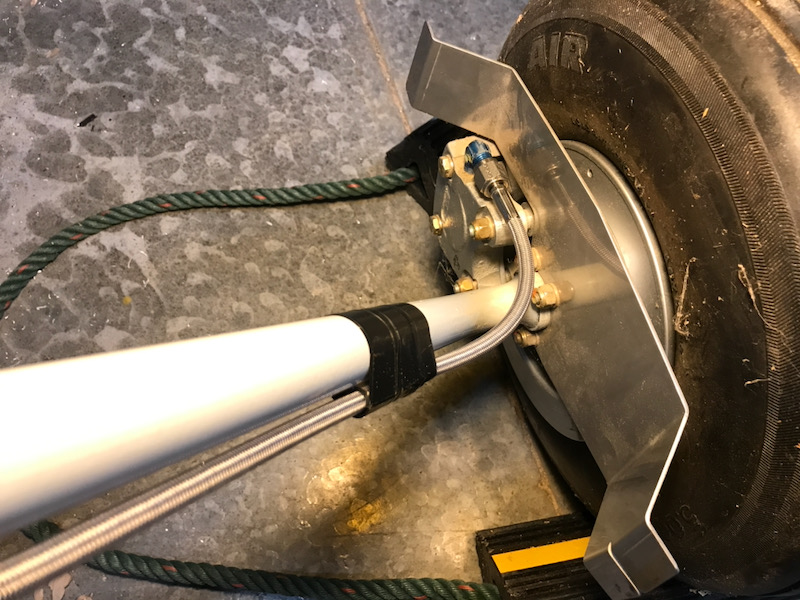
Here are some detail shots of the right side brake hose… first it crosses behind the diagonal engine mount tubes, with adel clamps to affix it near the breather hose:
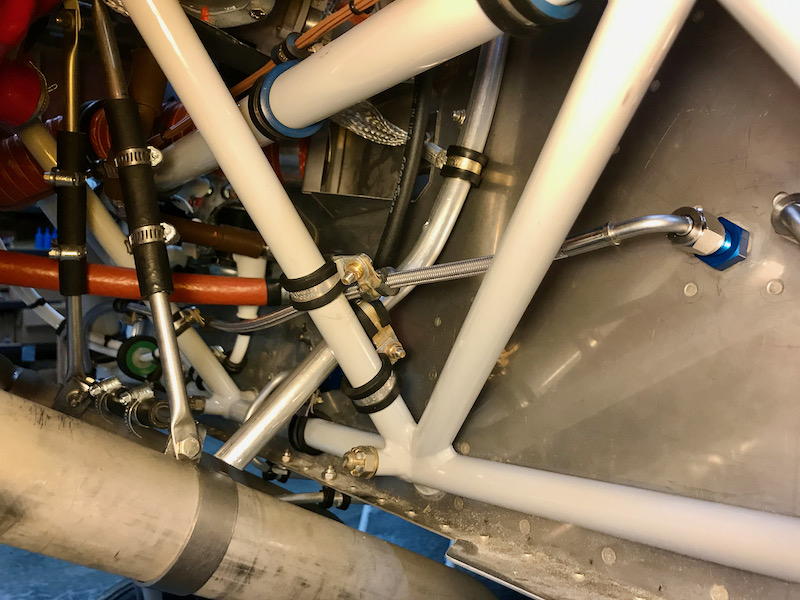
Then it dips down and under the prop governor cable, curves around in front of some electrical components, and then finally proceeds down the right gear leg. Altogether this hose is affixed to the engine mount in four places, which was a fun exercise in adel clampery.
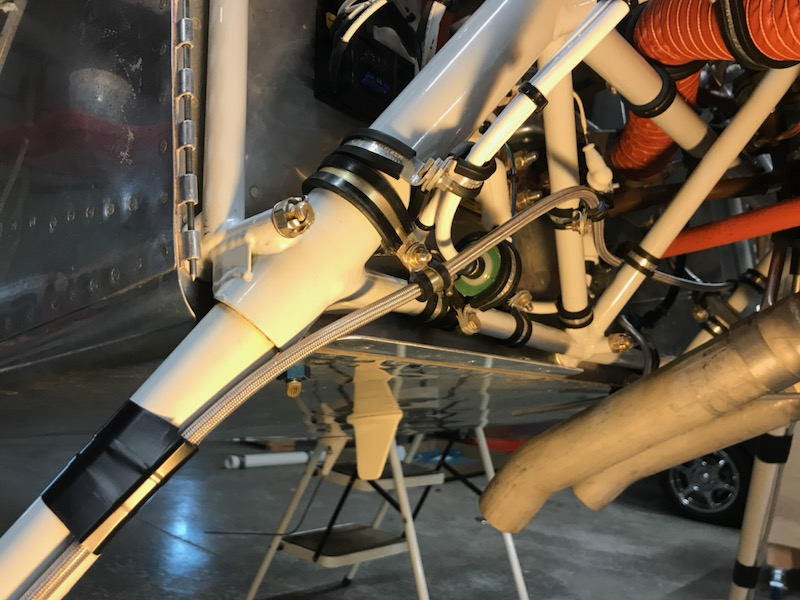
Then from there it's another straight shot to the right side brake caliper, again with the same tape treatment to fix it to the gear leg:
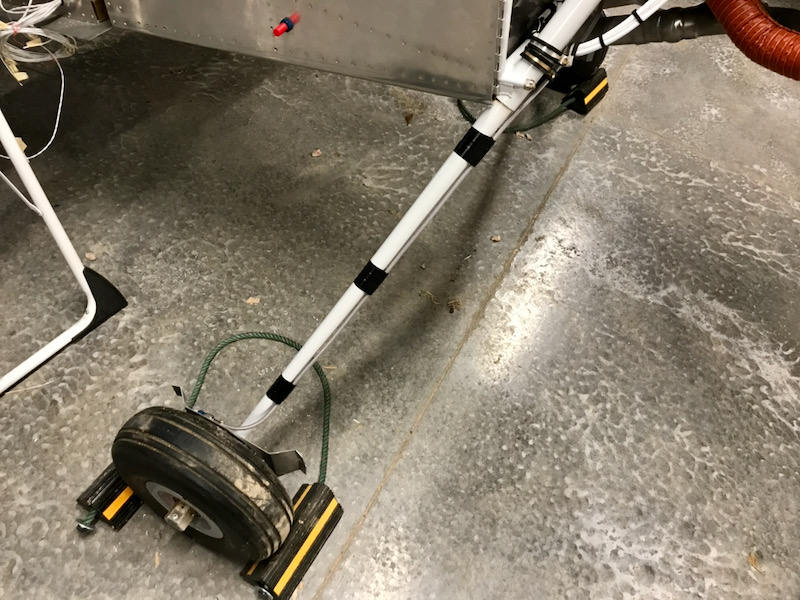
There's no brake fluid in these lines yet, but at least all the plumbing is there now.
